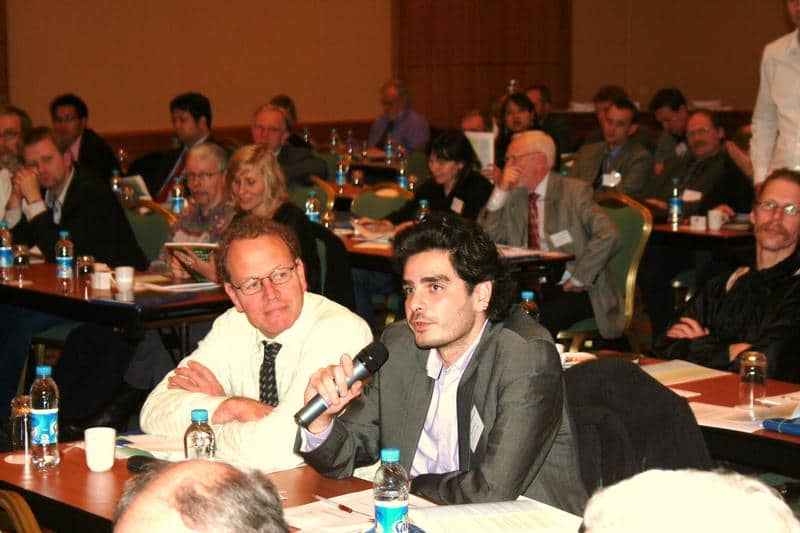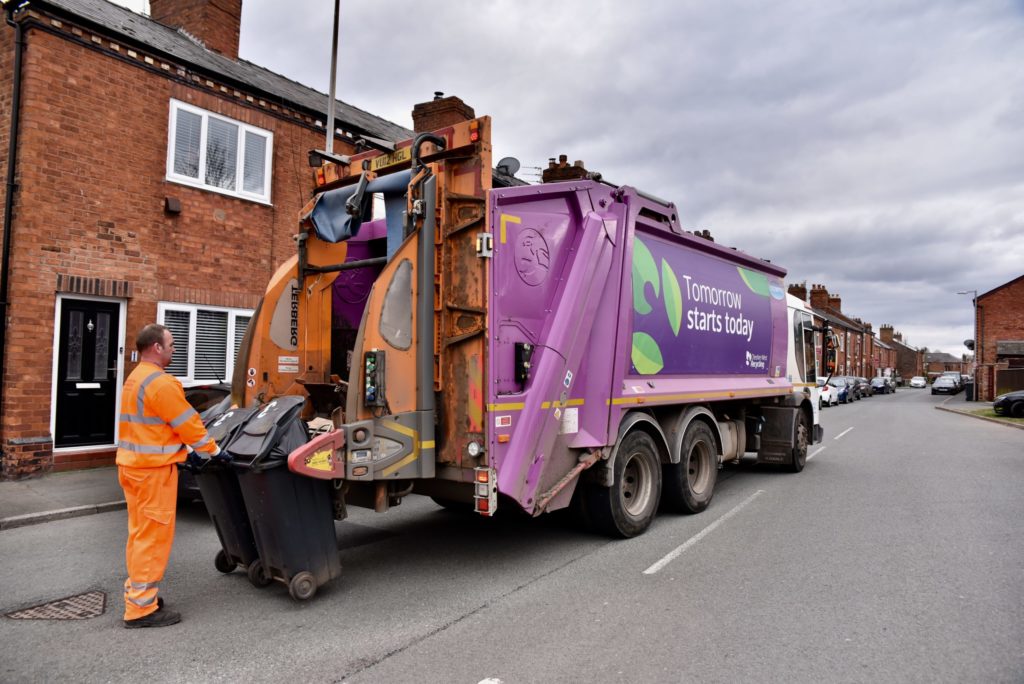Report by Jeff Cooper, a special corrrespondent for letsrecycle.com, and the vice president of the International Solid Waste Association and a member of the Waste & Climate conference organisation committee.
Conference aims
The aim of the waste conference and its timing was to highlight how progressive waste management policies and practices can play an important role in efforts to mitigate climate change.
Organised jointly by the ISWA and the Danish national member of ISWA, DAKOFA (Dansk Kompetencecenter for Affald), the conference attracted more than 220 participants from 30 countries.
In his welcome address Dr Atilio Savino, the president of ISWA introduced the association's White Paper on Waste and Climate. Dr Savino has had a long association with climate change issues, having been Secretary of State for the Environment in Argentina. He was vice president of the Bureau of the 11th Conference of the Parties of the United Nations Framework Convention on Climate Change (UNFCCC) after having had the responsibility for organising the 10th Conference of the Parties in Buenos Aires in 2004. These meetings were crucial in ensuring the entry into force of the Kyoto Protocol in early 2005.
In parallel to the preparation for the conference, more than two years ago ISWA had decided that the implications of climate change were so important that it needed to undertake more research on the issue. In order to explain both the impacts of waste and the benefits from improving waste management systems, ISWA wanted more definitive data and information. Therefore the Greenhouse Gases and Sustainable Waste Management Task Force (GHG-SWM TF) was established. Jens Aage Hansen, the editor-in-chief of Waste Management and Research (WM&R), ISWA's monthly academic journal, and emeritus Professor at the University of Aarhus, located in central Denmark, was asked to head the task force.
The ISWA GHG-SWM TF
The service provision status of the waste management industry, as exemplified in the publication of the Independent Panel on Climate Change (IPCC) in its Fourth Assessment Report (AR4) in 2007, means that not all of its environmental impacts are necessarily set against the waste industry.
The task force became responsible for the production of research examining outputs of the interface between waste management and its GHG emissions and which resulted in the production of three documents. Under the leadership of Professor Thomas Hólund Christensen of the Technical University of Denmark based in Copenhagen a group of 20 PhD students were assigned responsibility to tackle a wide range of issues, both the methodological and operational perspectives for managing and treatment of waste, focussing mainly on MSW. Professor Christensen is also a member of the DAKOFA Executive Committee and chaired the Programme Committee for the Conference.
The research of the 20 PhD students at the Technical University over the past two years have been devoted to a variety of issues on waste management and a summary of their findings has been published in two issues of WM&R. These publications were provided to each of the participants at the conference and dealt with concepts and mechanisms of GHG accounting and methodologies and case studies were sponsored by a Danish charitable foundation COWIfonden.
The successive draft findings of the research studies undertaken by these postgraduate students were subjected to critical scrutiny by members of the nine ISWA Working Groups dealing with specific waste streams or cross-cutting aspects of waste management. Two dedicated workshops were held: in October 2008 in Copenhagen and then in Paris in May 2009 so that the research findings of the students were informed by the current waste management experience of practising waste managers.
These studies, together with other specially commissioned articles related to GHG management of wastes, have been published as special issues of WM&R published in November 2009. In turn these studies were used as the scientific basis for the ISWA white paper on Waste and Climate Change.
The IPCC report noted that the waste management sector accounted for 3-5% of GHG emissions. However, as an analysis of the background detail of the interactions in the waste management chapter of the report showed there was concern that the industry's positive contribution was not necessarily being accounted for but being credited to other sectors.
Greenhouse Gas Emissions
The IPCC report noted that the waste management sector accounted for 3-5% of GHG emissions.
Emmanuel Gentil, a senior researcher of the DTU, in his presentation the various approaches in GHG accounting and reporting mechanisms – role and contribution of waste management stated that he had spent more than year examining the details of the IPCC report in order to determine what aspects of waste management operations were included in the waste management chapter and those assigned to other economic sectors. Thus the waste management sector has been credited mainly with the adverse impacts of waste treatment, predominantly the emissions from landfill, such as methane, carbon dioxide and nitrous oxides. The benefits of recycling and energy recovery were mainly accounted for by other economic sectors, such as industry and production, energy and agriculture, forestry and other land uses.
The ISWA white paper on Waste and Climate Change
The results of the research studies, which focused predominantly on MSW, have been collated and summarised in the ISWA white paper on Waste and Climate Change. There were also a number of commitments made by ISWA to reduce GHG emissions through a number of targeted actions.
The waste industry occupies a unique position as a potential reducer of GHG emissions. As industries and countries worldwide struggle to address their carbon footprint waste sector activities represent an opportunity for carbon reduction which has yet to be fully exploited. In the EU region municipal waste management activities on their own could potentially account for 18% of the 2012 Kyoto GHG reduction target set for the then 15 member states of the EU under the Kyoto Protocol. Indeed the European municipal waste system is well on the way to becoming a net reducer of GHG emissions because increased recycling and energy recovery opportunities progressively outweigh the direct emissions associated with the collection and treatment of waste.
The waste management industry provides a wide ranging portfolio of proven, practical and cost effective technologies which can contribute to GHG mitigation. When adapted and deployed to tackle local circumstances these waste treatment techniques can help secure significant global GHG emission savings. These solutions include waste prevention programmes, reuse and recycling, biological treatment with the land application of the resulting products, energy recovery and engineered landfill.
Waste prevention, minimisation, reuse and recycling are increasing globally and this represents a growing potential for reducing GHG emissions through the conservation of raw materials and fossil fuels. The potential GHG emission savings from waste prevention and minimisation could well exceed the savings that can be achieved by advanced technologies for managing post-consumer wastes.
Through aerobic and anaerobic biological treatment technologies organic wastes can be recovered and transformed into soil conditioners and fertilisers. These processes reduce GHG emissions by sequestering biogenic carbon in soils, improving the physical properties of soils and adding nutrients. The organic component of household waste ranges from 30-70% and if separately collected and treated it offers a valuable contribution to GHG emissions reduction and soil improvement.
Waste offers a significant source of renewable energy. Incineration and other thermal processes for converting waste to energy, landfill gas recovery and utilisation and the use of anaerobic digester biogas can play an important role in substituting fossil fuel consumption and thereby reducing GHG emissions. While globally more than 130m tpa of wastes are incinerated in more than 600 plants the energy recovery potential of incineration and other energy recovery options is capable of even greater contribution is managing residual wastes and thereby the greater substitution of fossil fuels.
Technology
The White Paper continues with other examples of the importance of tacling waste issues. The transfer of sustainable technology to developing countries is stated as crucial to reducing GHG emissions. The Clean Development Mechanism (CDM) introduced by the Kyoto Protocol has provided the chance for the waste sector to make significant advances towards this objective. Currently 18% of CDM projects are waste related, predominantly through the better management of landfills and the control of landfill gas emissions. However, structural and administrative improvements to the CDM registration process are necessary to ensure that the full spectrum of waste treatment options can be utilised to manage GHG emissions, including the recovery of materials from MSW.
Waste policies and regulations can be strong national drivers to reduce GHG emissions. In developing countries, it is important to focus on waste policies, planning and regulatory frameworks that are practicable and sustainable. Initiatives from one system cannot be exported to another country without taking account of local waste composition and quantities, the infrastructure, economic structures and physical factors, such as the climate.
Accurate measurement and quantification of GHG emissions is vital in order to set and monitor realistic GHG reduction targets at every level. Current methodologies form a valuable database for assessment of GHG emissions from waste activities. However, improvements are required to represent adequately the full lifecycle of materials and energy.
ISWA's Commitments on Waste and Climate
ISWA has committed to reducing global GHG reductions through the following five targeted actions:
- Networking for capacity building, disseminating knowledge and experience at country, institutional or individual levels has always been a key aspect of ISWA's remit. In future ISWA will continue to cooperate with complementary organisations tackling sustainable material and energy management activities, such as UNEP and the World Bank
- ISWA will work in partnership with established providers such as research institutions and others to transfer knowledge and expertise to less developed regions
- Selecting cities to participate in case studies and targeted actions to mitigate GHG emissions through waste management systems and disseminating the results of their experience to other comparable cities
- Assess experience from different countries and regions on establishing appropriate waste management policies, strategies and regulations. With solid data to draw on ISWA will develop a sound basis for recommendations that would accomplish optimum waste-related GHG emission reductions, both locally and globally. This work might include formulation of implementation, enforcement and compliance tools as well as transparent and accounting methodologies.
- Participate actively in global events and negotiations relating to waste and climate change up to 2012 and beyond. ISWA will work in cooperation with other international institutions to promote a more global and ambitious commitment to GHG reduction targets, focusing on realising the potential for waste related GHG emission reductions.
Outcomes from the Conference
There was considerable debate at the conference over the ideal and optimum ways of ensuring that the waste sector maximises its contribution to reducing GHG reductions. Overall it was agreed that the key components of the long-term development of the waste sector in ensuring the reduction of GHG reductions, was through the development of integrated waste treatment systems incorporating all of the components outlined in the report, including landfill as outlined in the ISWA white paper. However, inevitably there was considerable divergence of views regarding how we should progress in the future.
One conference participant wondered why the EU was supporting the development of landfills in the former Eastern Bloc states that were now members of the EU rather than sponsoring options further up the waste hierarchy, such as energy recovery. Another participant having established a CDM composting project in Dacca, Bangladesh, questioned why there was so much emphasis given to energy recovery in the conference programme as in his European operation there was no energy recovery, only recycling and composting.
Overall, there was agreement that the ISWA White Paper on Waste and Climate Change provided an appropriate route map to ensuring that the waste industry plays its part in minimising the generation and mitigation of GHG emissions in the future. Summing up where ISWA should be aiming for in the future the chair of the GHG-SWM TF, Professor Jens Aage Hansen suggested that in future that ISWA should become the International Steward on Waste Action.











Subscribe for free